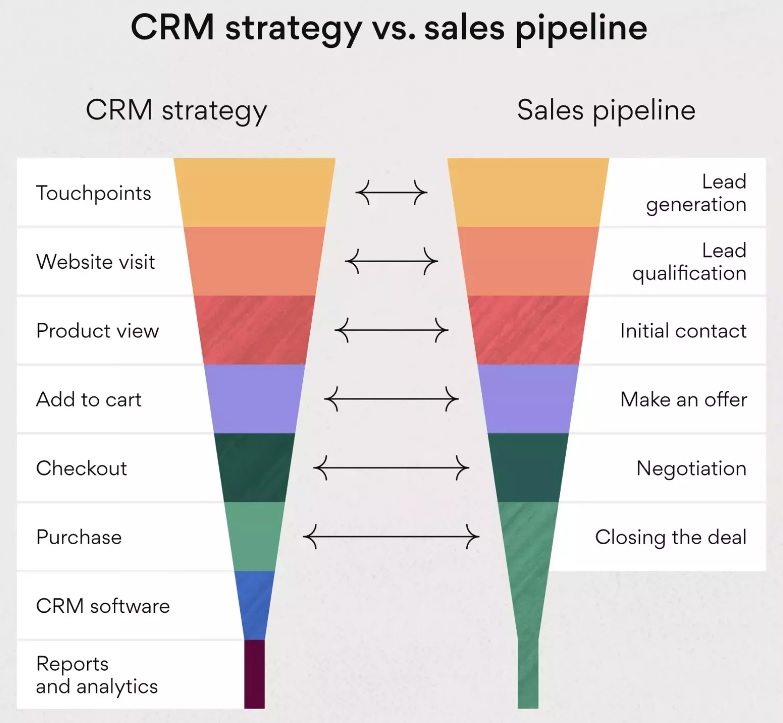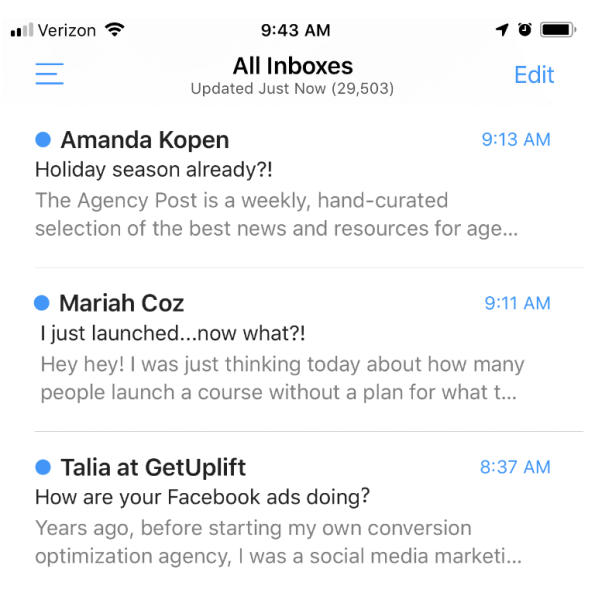
Catarina Alves Sousa
Social Media Manager & Content Writer
Have you noticed that we’re constantly exposed to videos? More than ever we’re being targeted by this type of content, whether we’re looking for it or not. Brands have also noticed this phenomenon and are trying to keep up with it, increasing their investment – and even creativity – in video marketing. In this article, we’ll explore what has led to this consumption and look at the biggest trends for the future of video marketing.

Catarina Alves Sousa
Social Media Manager & Content Writer
Have you noticed that we’re constantly exposed to videos? More than ever we’re being targeted by this type of content, whether we’re looking for it or not. Brands have also noticed this phenomenon and are trying to keep up with it, increasing their investment – and even creativity – in video marketing. In this article, we’ll explore what has led to this consumption and look at the biggest trends for the future of video marketing.
Whether on social networks, websites or even landing pages, videos are everywhere and it’s impossible to ignore them. However, the rise of video marketing didn’t happen by chance and if video content currently achieves up to 1200% more engagement compared to other formats, some facts explain these figures, starting with the pandemic.
The COVID-19 pandemic, which hit the world in 2020, brought with it a series of significant changes in human behavior and habits. One of the most notable transformations has been the exponential boom in video and video marketing. With the restrictions of mobility and confinement, people began to consume (and produce) more content online, and companies quickly realized the importance of adapting to this new reality. Video, due to its ability to convey messages dynamically and engagingly, has become the tool of choice for many brands. Companies of all sizes and sectors have stepped up their digital presence, betting on video marketing campaigns to reach and engage their target audience. This trend, which began as an immediate response to the pandemic, promises to continue growing and shaping the future of digital marketing.
But what makes video so powerful and what are the emerging trends that companies should be paying attention to?
“The play button is the most compelling call-to-action on the web.” – Michael Litt, co-founder and CEO da Vidyard
 Source: Pexels
Source: Pexels
The science behind the video connection
Since the dawn of humanity, stories have been a powerful tool for transmitting knowledge, culture, and values. Human beings are intrinsically attracted to narratives and moving images, a predisposition that has deep roots in our evolution as a species. This attraction is no mere coincidence; it has a scientific explanation. Our brain, an incredibly complex and efficient machine, processes visual information 60,000 times faster than text. This speed is an evolutionary advantage, allowing us to react promptly to stimuli and situations in the environment. Furthermore, it is estimated that around 90% of the information transmitted to our brain is visual.
This predominance of the visual over other senses highlights the importance and effectiveness of videos as a means of communication. In a world saturated with information, videos have emerged as a key tool, not only because they can be processed quickly, but also because of their unparalleled ability to capture attention, evoke emotions, and convey messages in a clear and impactful way.
Emerging trends in Video Marketing
 Source: Pexels
Source: Pexels
In the dynamic world of video marketing, trends are constantly evolving.
These trends reflect the incessant search for innovation and adaptation to changes in media consumption habits.
- Short videos: platforms such as TikTok and Instagram Reels have popularized the short video format. These videos, usually between 15 and 60 seconds long, are ideal for conveying quick messages and engaging audiences.
- Vertical video: once considered a mistake, vertical video has become the norm, especially with the increase in content consumption on mobile devices.
- 360º videos: these videos offer a totally immersive experience, allowing viewers to feel as if they were inside the video. They are particularly popular in sectors such as tourism and real estate.
- Live video: live streaming allows for real-time interaction with the audience, creating a sense of urgency and exclusivity.
In addition to these trends, which will continue, new developments are already being predicted and lined up in the video content production landscape for 2024. Among the trends expected for next year are the following:
- Smartphone production;
- Search-optimized videos;
- Vlogs;
- Stories on social networks;
- AR/VR/IA videos (Augmented Reality/Virtual Reality/Artificial Intelligence);
- Silent videos;
- Personalized video experiences.
Changes in the human paradigm and the demand for short-form content
The rise of short videos, such as those found on TikTok, Instagram Reels, and YouTube Shorts, reflects significant changes in consumer behavior and preferences, which in turn can be linked to broader developments in the human species and in our abilities to concentrate and pay attention.
Due to the omnipresence of smartphones, we are constantly surrounded by stimuli. Notifications, messages, app updates, and other frequent interruptions have conditioned many of us to quickly switch our attention between tasks and information. This environment of constant stimuli may have contributed to a decrease in our attention spans.
In this world saturated with information and content, attention has become a valuable currency. Social media platforms compete fiercely for users’ attention, and short videos have emerged as an effective solution for capturing and retaining that attention, even briefly.
In addition, the human species has shown a growing demand for instant gratification. We want immediate entertainment, information, and satisfaction. Short videos satisfy this need, offering digestible and often captivating content in a matter of seconds.
Another factor explaining the rise of short videos is time. Modern life is often characterized by fast-paced rhythms and busy schedules, so short videos fit perfectly into the brief intervals of everyday life, whether it’s a coffee break, waiting for public transport, or between appointments.
Despite their brevity, many short videos can create a quick emotional connection with the audience. Whether through humor, surprise, or excitement, these videos are designed to provoke an immediate reaction, encouraging sharing and interaction.
Examples of Successful Video Campaigns
Some campaigns, due to their creativity, message and execution, stand out and become iconic, influencing not only purchasing decisions, but also the way we see and interpret the world around us. Here are some notable examples of video campaigns that have left an indelible mark on the advertising landscape and in the minds of consumers.
Nike – “Just Do It”
Nike’s “Just Do It” campaign became iconic not only for its simple but powerful slogan but also for the way it was presented to the public. The campaign’s videos are often short but emotionally charged, showing athletes and ordinary individuals overcoming obstacles and achieving their goals. The underlying message is clear: with determination and the right equipment, anyone can overcome challenges and achieve excellence. The videos in this campaign resonate deeply with audiences because they appeal to the human desire to overcome and achieve.
Nike’s first “Just do it” ad dates back to 1988 and, despite its age, retains the timelessness of the inspiration behind the campaign and the human desire to excel, which is common to every era, gender, age and economic and social context.
Dove – “Real Beauty”
Dove’s “Real Beauty” campaign stood out for challenging the traditional and often unattainable standards of beauty promoted by the fashion and media industries. Instead of using perfect models, Dove chose to present real women, with real bodies and real stories, celebrating diversity and natural beauty. The videos in this campaign touched a nerve in society, questioning ideals of beauty and promoting self-acceptance. By creating a deep emotional connection with the public, Dove not only promoted its products but also started a body positivity movement.
Read also: Inclusive Marketing: why inclusion and diversity are essential for brands
Red Bull – Adrenaline to the max
Red Bull is more than just an energy drink; it’s a brand associated with adventure, extreme sport, and adrenaline. Through its video ads, Red Bull captures moments of pure excitement, from parachute jumps from the stratosphere to car races on challenging terrain. These videos are not just product promotions, they are experiences. By associating itself with extreme and exciting moments, Red Bull solidifies its position as a brand for those who live on the edge and seek strong emotions, showing that it knows its target audience well.
These campaigns are brilliant examples of how video marketing, when well executed, can not only promote a product, but also create movements, challenge norms and connect deeply with the public.
The Future of Video Marketing
“Stop thinking of video marketing as this separate entity that is optional for your business. Video is an effective form of communication that needs to be integrated into each and every aspect of your existing marketing efforts.” – James Wedmore, founder of Vidyard
As technology advances, we can expect to see more innovations in the video marketing space. Virtual and augmented reality, for example, will offer opportunities to create even more immersive video experiences. In addition, personalization will play a crucial role, allowing companies to create videos tailored to viewers’ individual preferences.
Video marketing is more than just a trend; it’s an essential tool for any modern marketing strategy. As we enter an increasingly digital age, companies that harness the power of video will be better placed to connect with their audience and achieve success.
We invite you to take a look at some of Jelly’s video work on YouTube channel. If you would like us to produce videos for your company or brand, please get in touch using the contact details on this page.
Read also: Video is Content King










 Source: Mint
Source: Mint






